Discover The Conversation Art Podcast
The Conversation Art Podcast

The Conversation Art Podcast
Author: Michael Shaw
Subscribed: 223Played: 5,166Subscribe
Share
Description
A podcast featuring both one-on-one and three-way roundtable conversations with contemporary artists, dealers, curators, and collectors--based in Los Angeles, but reaching nationally and internationally.
209 Episodes
Reverse
Co-owners Sara Maria Salamone and Tyler Lafreniere of MRS. Gallery in Queens, New York, talk about: The origin behind MRS.’s concise and memorable name; what it’s been like running their gallery in the relatively off-the-beaten-path neighborhood of Maspeth,Queens, and how they get consistent traffic despite their location; their rising success at the start of their 2nd season with Genesis Belanger’s show; their slower-paced five shows per season schedule, which is both more manageable and potentially a model that other galleries are considering using as well; sales, and all the things that go into maintaining and growing them as a small, young gallery; why Sara loves art fairs (and Tyler enjoys them as well) and how important they are at this stage for the gallery’s business, since despite being in NYC, their Maspeth location limits turnout, which they make up for at the fairs (they’re doing NADA Miami this Dec.); the importance of social media, specifically Instagram, for their acquiring new collectors, several of whom are buying works virtually, unseen in person; and Sara’s level of connectivity (as the gallery “mama bear”), and to what extent she feels it’s healthy vs. necessary.
Along with co-host (and gallerist) Deb Klowden Mann, Los Angeles-based Matthew Gardocki, former gallery manager at Patrick Painter and Mark Moore galleries, talks about: His decade-plus time working for two long-running L.A. galleries, the different management style of each, how he transitioned from one gallery to the other (they were across the parking lot from each other at Bergamot Station in Santa Monica), and how he became a good fireman (by getting really good at putting out fires); his experiences going to art fairs, both to sell and to sneak in a little travel; we talk about the viability of mid-sized and/or family galleries as business models, vis-à-vis the recent closing of Matthew's last employer Mark Moore; various art world comparisons, particularly mid-sized galleries vs. the big galleries, the big galleries vs. museums, secondary market sales as a way for a gallery to survive (and how the 2ndary market has dried up according to Matthew), and the challenge of mid-tier galleries; how he's looking for gallery work, and what's come up in his interviews, including his availability as a father of a 2-year-old; the reliability (or lack thereof) of collectors making studio or gallery visits; gender bias in the workplace, and finally, Matthew shares a very unusual birth story (of his daughter) that you likely haven't heard before.
In the part 1 of 2 episodes, NYC artist Joshua Citarella talks about: Why he grew disillusioned with the art world vis-à-vis the art market, including his having early success but also being part of the ‘pump-and-dump’ market rise and fall between 2012 and 2015; his collaborations with artist Brad Troemmel - who was profiled in a New Yorker article by Adrien Chen, and in which Citarella was also featured – particularly their online marketplace project UV Production House; his thoughts on social media, particularly his wisdom about Instagram, and how artists should aim to be tastemakers rather than following trends that the algorithms like; his hope in using social media (via Meme culture and more) to take down established structures of the art world, and the subsequent hard dose of reality that followed; untangling the concept, or the presumption even, that an artist is a progressive; and navigating the roles of artist and activist, and where an artist can be most productive.
Brooklyn-based artist and commercial-studio-building developer Stef Halmos talks about: How she feels about Greenpoint’s gentrification arc, as a 12-year resident there herself; her commercial development in Catskill, New York, two hours north of the city, where she’s helming the renovation and rentals of a 50,000 sq. foot building called Foreland Catskill for studios, galleries and production facilities; the genesis for starting the project/buying the building, which came out of wanting to join a communal studio situation instead of working from home; what she’s been learning as a developer/project manager in terms of obtaining permits (much easier than it would have been in the city), working with the contractor (Rich, who she speaks about glowingly), and what they need to do to keep the building sustainable for another 150 years; her father, who co-owns the building with Stef and also acts as her mentor and “consigliere,” providing endless advice on the project; her early years as a video artist and photographer, including interning for Annie Leibowitz; losing all the work she had ever made (which had been kept in UHaul storage) during Superstorm Sandy, and how that changed her art-making and career trajectory; and the two-and-a-half years when she wasn’t making any work at all, and how she managed to turn that unproductive period around.
New York gallerist Jimi Dams of Envoy Enterprises talks about: His dissolution with the art world (and particularly the market and fairs); his one-a-day exhibition series, when he observed poor behavior in a curator, an early indicator of unraveling in a way that would continue to unfold through the art world; his story of switching from being an artist – which he had to quit due to health issues - to opening a gallery, despite being a socialist, with the financial support from the late Hudson, former owner of Feature Gallery; how he ran/has run his gallery as a former artist, including having pizza nights where all his artists get together and hash things out openly; his frustration with the priorities of graduate schools today, with an over emphasis on 'professionalism' and the like; his (rather firm) advice to younger artists on what they should do, advice that art students he's spoken to have struggled to hear let alone accept; and how during his gallery's openings, you won't find him out in the gallery but in his office.
Napa, CA-based artist Arleene Correa Valencia talks about: Why she lives in Napa, CA, and the two distinct versions of the town, for the wealthy and for the poor ("you're either the owner of the vineyard, or you're working the vineyard," as she put it); how she's the first generation to not be working the vineyards, his dad having worked the vineyard for a period before transitioning to hand-painting etched wine bottles for a winery (which he had to ultimately leave for lack of being paid enough because he didn't have an MFA); her favorite wines by grape (Pinots and Cabs from Sonoma mainly), and more recently a master fabricator color theorist and surface touch-up artist; making her dad's dreams to become an artist come to fruition through her; how she always refers to the work she makes as 'ours,' assuming everyone knows that her father always has a hand in the projects, in addition to consistently collaborating with makers from her culture of origin; the letters she exchanged with her father, while he was working to lay a foundation for the family to move to the U.S., among the artworks acquired by Stanford's Cantor Arts Center; her complicated DACA (Dreamer) status, and the exhibition she was able to have in Mexico (in Puebla, about 2 hours from Mexico City) which ultimately allowed her to apply for, and get, a green card; how she had to defer her dream to go to a 4-year university or art school until she received DACA status, and then she got a Diversity Scholarship that allowed her to attend California College of the Arts, which she would never otherwise would have been able to afford; how one of her 1st interviews was for someone interested in learning about being undocumented in the arts (originally published in Hyperallergic, she had to have it taken down for legal reasons to protect her); how her various supporters propelled her into her art-making and her art school education, and in turn the questions she asks herself about how she can help others, undocumented and otherwise… This podcast relies on listener support; please consider becoming a Patreon supporter of the podcast, for as little as $1/month, here: https://www.patreon.com/theconversationpod In the 2nd half of our conversation (available on Patreon), Arleene talks about: How her mom comes from a family with 36 brothers and sisters, so is part of an enormous extended family; the BRCA mutation in her family, in which bodies are much more susceptible to various cancers, including breast cancer and ovarian; why ICE hasn't been active in the Napa Valley area, very likely because people of wealth and/or power won't allow their wine supply to be affected; how aware she is of her career and her sales, and that she's proud of her production rate and the work her gallery is doing with her; the demand for her truck paintings, and why she has a need to make those paintings, not producing them for a paycheck; when she requested a collector give her more time to finish a piece that she wasn't happy with, and re-made it; how integral her dad is to her work and her process, and how he's celebrated along with her, if only through his tremendous pride in her, and that it wouldn't all happen without him; the work they do with a tattoo family, and how it's similar to the dynamic that she and her dad as a family do together, which she acknowledges is a bit like the man behind the curtain; her Tochtli (rabbit) tattoo, a symbol in her family that signifies selflessness and the ultimate sacrifice; how the evolution of her being tattooed, which started when she was 18, has been about honoring the story of her ancestry and claiming her identity, and how her brothers, like her, are acquiring full body suits of tattoos.
London-based photographer and writer Michael Collins talks about: The flat where he's lived for 35 years, which is getting 'Wallace & Gromit' crowded; how he keeps film in his deep freeze (aka freezer) as opposed to anything edible, and how he's happy to shop for the day, while he points out that Brits see American refrigerators and are overwhelmed by how large they are; and by the way, we're also bludgeoned by advertising here, compared with the UK and Europe; how he sees our social media consumption as giving in to the impulsive at the expense of the rational, a battle he gives in to daily for a half hour on IG…and how sometimes, you just want to look at a panda falling out of a tree; why readers (of books) make better viewers of artworks; how when his photographs are printed at full scale (4 x 5 feet) you can walk into them and how part of photography's schtick is that it's nosy, that it admits everything in it; his takeaways from giving a presentation at the Hampstead Photographic Society, in which have the members bolted for the door at the break; the importance of 19th century photography to understanding the history of photography, and how it's not shown enough in museums (at least in London); how he started studying politics, but switched over to art, initially stumbling into photography as an editor at a teenage girl's magazine, then moving to The Observer, and then he became picture editor at the Daily Telegraph, where he realized, amidst a more rushed editorial structure that went with predictable stock photographers, that the most interesting photography was not there to fulfill another's agenda, but in pursuit of independence, to fulfill its own agenda. This podcast relies on listener support; please consider becoming a Patreon supporter of the podcast, for as little as $1/month, here: https://www.patreon.com/theconversationpod In the 2nd half of our conversation (available on Patreon), Michael talks about: The challenges of evolving and following your own path at the expense of taking the more marketable route, which means maintaining your integrity, and how his photographs, and his writing are both better than ever; the complex and fulfilling experience he had visiting and re-visiting a Jeff Wall museum exhibition; how the photographer Martin Parr dominates the scene in Britain, and how all his pictures look roughly the same, and yet he's kind of this hero in the country, through the 'steamroll of publicity,' and how there's far more depth, wealth and nuance out there than we're being allowed…; his first art review (for The Daily Telegraph), of Andreas Gursky's exhibition at Tate Liverpool, which uncovered a surprising digital edit, one he was turned on to by one of the museum custodians, and when he wrote the review that included his misgivings about the work, the Tate press office told him he was being cruel (to which he replied, "that's not being cruel, that's being honest"), and how another artist's agent threatened to sue for a negative review; our respective takes on art writing and criticism, in terms of what he appreciates vs. can't tolerate, and what I appreciate and can't tolerate; more about the world of magazine editing, which he describes as being a lifetime ago…; and finally, to wind down our conversation, we talk about his book, Blind Corners, which features several essays exploring across the spectrum of photography and photography's history; in particular we review a passage where he compares Americana via Kodachrome and Hollywood light with the dull, austere light of Britain, and he goes on to call out Dubai as the culmination of late capitalism.
Pasadena-based artist Linnéa Gabriella Spransy talks about: Growing up between Wisconsin and a commune in Oregon, the latter which she describes as a complete commitment more than an experiment (the town was Wildeville, Cape Junction being the closest city); how you radically live out the life of Christianity, including giving away all their stuff, and how her father played in a Christian glam rock band that toured the world; having a positive commune experience, yet winding up 'inevitably becoming part of the machine,' aka capitalism, despite her wonderings as a child, which are still there; her period living and working in Kansas City for seven years after grad school at Yale, figuring out which voices to use in her work and make enough to have a house and a nice studio, and yet felt claustrophobic by its limitations and where she saw herself in the future if she had stayed there; her mantra in Kansas City, "if there's no pressure, I still do it," in determining what work she would keep making no matter what; her intense experience at Yale, where everyone, even the future stars, received harsh criticism for a range of reasons; the big advantages of artists who are extroverted charmers, especially in comparison to the 'ambiverts,' as Linnea calls them (and who we both essentially identify as), and even more so the more misanthropically aligned artists; her tenure co-founding Bridge Projects, a spiritually-oriented gallery in Hollywood, which had the misfortune of opening days before the pandemic. In the Patreon BONUS episode (379A), twice as long as episode 379/the public feed, Linnea also talks about: Her complex take on the existential state we're in politically and culturally in the context of history, in which she identifies with people from numerous eras of the past, confronting their own challenging times and what we have in common; her experience living in Pasadena as a diverse place with a significant history and culture, and, as a neighbor to Altadena, what their respective roles have been as neighborhoods for artists in the context of the Eaton fire; her different working methods, from the through-the-process-oriented abstraction, as opposed to her much more research-based figurative work…she describes each of them as working different muscles; in the context of her 'growing a human person,' as she put it, the importance of having a rich internal life, interesting things, interesting people…; and whether she should get a studio in an artist building downtown, vs. sticking with her garage studio at home. She also asks (and to some extent answers) a question in support of the future artist advice podcast, The Intrepid Artist.
Camilla Taylor, Los Angeles artist, and curator of "My House Burned Down" (at Track16 Gallery), talks about: Her childhood with complicated religious origins, between her Mormon LDS father and her mother who branched off to start her own organization (some might say 'cult,' per Camilla), and how art, for her and many artists, can often fit the functions that people are often looking for in religions (including being part of something bigger than themselves); how she's really good at compartmentalizing, seeing difficult experiences from her life as existing in rooms in a house, where she can shut the door to any given room; the epic story of experiencing her house burning down in the Eaton Fire in Altadena-- from her 16-hour drive home from the Sitka Center residency in Oregon, to seeing it when she approached her part of the San Gabriel Valley, to arriving home and having the wind lift her off her feet, to their belated evacuation; and subsequently how she found out her and her partner's house, and her studio, had burned down, and that that process of mourning has been like; how trauma has manifested from losing her home and studio, and the range of reactions she's received, including a lot of suggestions that are tone-deaf; what insurance will cover, and the studio spaces she's been loaned/gifted for now, putting off the need for having to rent a studio for the first time (since studios have always been attached to her living spaces). This podcast relies on listener support; please consider becoming a Patreon supporter of the podcast, for as little as $1/month, here: https://www.patreon.com/theconversationpod In the 2nd/Patreon Bonus half of the conversation, Camilla talks about: How, because of her visibility as an artist, she's been more fortunate than many others who lost homes/studios in the fire by receiving a range of resources that artists less visible have not; the lawsuits against Southern California Edison, who allegedly started the Eaton fire; the group show she curated, 'My House Burned Down,' at Track 16 Gallery, which included four artists who lost their homes in the Eaton fire, and four artists who lost their homes in prior fires, and how the show addressed a commonality in losing one's home as an artist, with an extra emphasis on materiality; how while she doesn't know what the right reaction is, when people learn that her house (and studio) burned down in a fire, she knows that the reaction that she's going to rise above it, like the phoenix from the ashes, is absolutely not the reaction to have, because it's hurtful especially in its negating of what happened to her; and we have an extensive exchange about what I have long referred to as "the P-word," as in 'practice, as in 'my art practice, a word Camilla also hates, and she talks about why language has become so important in art/the art world, including her take that artists overcompensate in art because, essentially, we/art is so unimportant to everyone else; and Camilla shares her favorite and least favorite art-speak words; and how in her teaching she's honest with students about how their work affects her, as opposed to making art historical comparisons.
Brooklyn-based artist and sometimes New Yorker magazine cartoonist Guy Richards Smit returns to the podcast eight years after his first visit to talk about: His admitted high self-regard, paired with self-awareness, which we identify as being rare; our respective experiences and takes on artist blowhards; his history with cartooning, going back to his obsession with gag cartoons, going back to a New Yorker cartoon book he read at his grandparents' house when he was a kid; how he started making his own gag cartoons; the steps he took to build his cartoon portfolio, leading to getting published in the New Yorker after a year and a half of submitting (which is much quicker than some); the cartoon he made for the New Yorker website, the 'Daily,' that went viral (receiving 1500 comments, not to mention other viral stats), including getting re-created in Turkish by a Turkish cartoonist; how he actually sees the cartoons as sketches for paintings (and gets quite painterly in the making of them); how about half of his cartoons are more insider-baseball-art cartoons, and the one he made that references one artist that he had in mind, although several reactions interpreted it as another artist, whom Guy actually heard from, wondering if it was about them. In the 2nd half of our conversation, available to Patreon Supporters of the podcast, you'll hear Guy talk about: How the parameters for where art can come from have changed, and how humor in art is still held, especially in the U.S., as a bit off limits; how his desire to paint a rock led to his Sisyphus cartoon (every cartoonist wants to do a Sisyphus cartoon); his desire to make a put out cartoons that are beautiful, not really a quality that the cartoon editor, or even cartoon consumers, are necessarily looking for; why the New Yorker cartoonists haven't been able to form a union, which is related to why there aren't really any other high-profile venues for gag cartoons to be seen; how he didn't have a gallery for 15 years, and was "forced to sell" his own work, using Instagram successfully for sales in the pre-algorithmic takeover era, when he got three to four times more engagement than he gets now (and thankfully for him he now doesn't require sales thru IG as much); his new dealer, Adam Cohen, who opened the gallery A Hug from The Art World three years ago; and how wanting to draw a Miro sculpture led to one of his most popular and most responded to cartoons at the Independent art fair in NYC this past spring. This podcast relies on listener support; please consider becoming a Patreon supporter of the podcast, for as little as $1/month, here: https://www.patreon.com/theconversationpod
In Episode 376, Alex and Theo Gribaudi-Plytas talk about: Their location in rural France, at the southern end of the Champagne region, where there are tons of vineyards, many of which they take friends from out of town to, and how even in their minimally populated area they see plenty of income inequality; how they met while living in London's version of dorms for art students, even though they were going to art schools that weren't at all near each other, and how they evolved from friends to romantic partners to romantic partners who make art collaboratively; Theo's art school professor, Leigh Clarke, who looked through the class's sketchbooks, and if they didn't past muster he'd throw them in the trash (it was symbolic); how they organically evolved into making art together as a pair, and what the advantages (and occasionally disadvantages) are, including the energy from vibing off each other's ideas, and how one can inspire the other and v.versa; how their life is their art, particularly with the evolution of their home/home studio and garden, all together as a piece. In the BONUS Full Episode, available to Patreon supporters of The Conversation, Alex and Theo discuss: Their perpetual moving in and moving out of studios in London, each after just a year or two, because they got priced out or the situation was unsustainable, and how they're translating the various functioning areas of those fleeting studio spaces to this permanent one, which is still very much a work-in-progress after three years (it's a former school house built in 1879 and a house next door); their 24-hour work/artmaking sensibility, which they make sound quite appealing, a world in which breakfast can be art, or they can be working on art-related sewing while watching a film; why they left the city for the country, even when they had such a wonderful time during art school and beyond in London; the details of their property, including the view into the forest, where hunting takes place (and which we discuss); their complex relationship using Instagram (they don't like to but need to); Theo's sister, Sarah Rosenzweig, who they both admire for getting off of Meta platforms despite living in the mountains in the south of France (she sends out calendars and advocates for progressive political causes).
Marcie Begleiter, an artist based on the Central Coast of California, talks about: artist residencies, including the Sitka Center for Art and Ecology, where she recently did a 4-week residency, including collecting biological specimens/samples; how her time and relationship with the residency evolves over those four weeks, which has lead to artistic breakthroughs; how she likes deadlines, and can structure her residency experience with the clock ticking and puts extra focus on what she's doing, and in addition having the support of the people running the residencies; the importance of the artist statement in applications for residencies; what her experience was like at Sitka, from where she stayed (at an offsite house as opposed to the onsite cabins) to how she spent her days and nights, and what her studio days are like on a residency vs. the studio where she lives; why she left New York (Manhattan) for, initially Taos, N.M., and eventually California (essentially she needed more access to nature); and the interdisciplinary program she started at Otis College of Art that focuses on social change in the community. In the 2nd half of our conversation, which is available on our Patreon page, she talks about: how she's restarting the local CERT (citizen's emergency response training) training in her unincorporated town (of Los Osos, CA), partially inspired by not having much access out of her area in an emergency; how she and her husband came to leaving Los Angeles for Los Osos, back in 2015/16, after she toured extensively with her documentary on the artist Eva Hesse; the benefits of living in a small town (Los Osos) which she prefers to city life; the lucky circumstances of having a great studio space in a location where you wouldn't expect great studios; why she vastly prefers a studio outside her home; she breaks down the different type of residencies: 1) fully funded plus stipends…2) fully funded, no stipend….3) highly subsidized…4) paying full ride; and finally, she addresses our standard finishing questions: how does she feel like social media in this moment, and how success is defined across various careers in the arts.
Oakland-based graphic artist Hugh D'Andrade, author of the graphic novel "The Murder Next Door," talks about: His first graphic novel, The Murder Next Door, including what led him to finally making a graphic novel after being a big fan of them for a long time; studying fine art at the California College of Arts and Crafts back in the 1980s, and then going back to the same school, now called simply California College of the Arts, to get a masters in graphic novels; graphic novelists who have been influential to Hugh, including Adrian Tomine from nearby Berkeley, Chris Ware, who he refers to as both a giant and a genius in the field, as well Art Spiegelman, Thi Bui (whom he had as one of his graphic novel professors), Marjane Satrapi, and Phoebe Glockner; how the graphic novelists he's met have generally been very talkative and have quirky sensibilities, but also have introverted streaks which are necessary for long stretches alone that are necessary for producing their work; how he worked on the beginning of his graphic novel while in grad school, where the crits were very nurturing and supportive, unlike crits from back in the day (undergrad); where graphic novel reading falls in our attention economy; the value he puts on the hand-drawn in comics, with modest digital intervention; and how Vipassana meditation, the first chapter of the book, played a big role in Hugh's healing journey…. [the Conversation continues for another hour in the BONUS episode for Patreon supporters] The Conversation Art Podcast | creating a podcast that goes behind the scenes of the art worlds | Patreon In the 2nd half of the full conversation (available to Patreon supporters), Hugh talks about: the distinction between cartooning and illustration, and how challenging it is to render a person from multiple views in that style; what feedback he's gotten so far, with at least one reader saying that it was 'very unique,' probably meaning they found it too dark; the roll his parents played (or didn't play) in healing from his trauma (the murder the book is focused on); his trolling of conspiracy theorists on social media (which is described in the book), which came out of his reaction to people making things up about who was responsible for the murder, along with the pros and cons of engaging with a conspiracy theorist; his description of 3 or 4 major career trajectory paths for artists in big art capitals, inspired by his nephew and students and their impending career paths- the A path/A-train: rock star; B path/B train: you have a partner who has a job/supports you financially; C path/train: artist with a day job; D-train: you live just outside of a major city, or in a college town, or rural areas; housing in the U.S., particularly in the art capitals (a sort of passion of both of ours) and how he bought a house in East Oakland, a part of the city he had never been in and he'd been living in the East Bay for decades; how he's in a 'coffee dessert,' meaning he needs to drive at least 10 minutes to get to a good coffee spot, leading to a beautiful paradox: as a participant in gentrifying his neighborhood, he realizes that as soon as that fancy coffee place pops up in his neighborhood, the gentrification will essentially be complete; the neighborhoods Hugh lived in in San Francisco, particularly the Mission, Hayes Valley and the Tenderloin, and their respective reputations and what he experienced living there as an older young person going to punk shows and the like; his friend Rebecca Solnit's book Hollow City, about how gentrification displaces people of color as well as creative communities; we dig quite a bit into the weeds of the housing crisis, and how he lived on the cheap in the Bay Area for years, including getting around by bike up until 10 years ago; and finally he talks about his music show highlights over the years, including his changing relationship to the Grateful Dead over the decades.
In Episode 373, Molly Rice & Rusty Thelin, co-founders of RealTime Arts in Pittsburgh, talk about: The especially niche field of their work, which is the performance of live theater that aligns more with visual art and doesn't really check any of the 'theater' boxes, and how they have interactive elements but don't confront the audience the way a lot of performance art does (they describe a "lot of conventions around theater… that contemporary audiences have trouble with…"); their series "People of Pittsburgh," whose tagline is 'Theatrical Portraits of Extraordinary Ordinary Pittsburghers;' the size of their audiences and how they're shows are often tailored to the neighborhood's they take place in, and how they make their performances as open to all as possible, with a 'radical hospitality' option whenever possible; their hosting of Little Amal, the puppet of a Syrian refugee girl that travels the world doing performances amidst community and how their version added a play that incorporated a massive local crowd; their rock performance, 'Angelmakers: Songs for Female Serial Killers,' which was a tight show, as compared with their more experimental and improvisatory shows, and how they got a much more mixed audience, including concert-goers to a rock concert, for that show. This podcast relies on listener support; please consider becoming a Patreon supporter of the podcast, for as little as $1/month, here: https://www.patreon.com/theconversationpod In the extended Full Patreon Bonus Episode, Molly & Rusty talk about: how they financially support their program, through a mix of fundraising, grants and occasional ticket sales; the gentrification that's happening in Pittsburgh, which they admit to being a part of, and moved there because they wanted to be somewhere they were needed, as artists, and was a perfect medium in between a big city and a small rural town; Pittsburg's cohesive art/cultural community, which reminds Molly of 1990s Austin, TX, when she played in bands; how she consider their work multi-disciplinary, influenced both by site-specific work, and that they're descendants of the happenings of the '60s and '70s (including Claes Oldenburg and Robert Wilson); their current approach to social media (including looking into leaving Meta platforms); how connecting is a large part of success; and how they feel about connecting with the podcast's Open Call (the short answer is: 'really good').
In Episode 372, the 1st half of the conversation with Amsterdam-based painter and photographer Claire Witteveen, she talks about: Her putting off painting initially in favor of photography, for reasons both practical and related to insecurity, partly based on her mom being an artist who juggled that and being a mother; how she can feel completely disconnected from her photography (mainly when it's a commercial object), but at other times, especially taking portraits, she feels very connected to her subjects; and how with painting she sees it as a monologue, whereas photography is more of a dialogue; how one photography job, combined with painting sales, can sustain her for the year; the complicated nature balance of making good work, and maintaining integrity, while also making a living, or enough income from the artmaking to survive on; the wide swings she can go through in the studio, from thinking she's re-inventing the wheel in the morning to thinking she's a total hack later that day; the nuanced factors that make a painting interesting, instead of just good, and an anecdote in which a collector at her opening asked what one of her paintings was about, only to find that it didn't really matter what she said, because it already 'spoke to his soul;' how she connected with her gallerists in Paris, whom she feels very lucky to have and very supported by; the transformation of her work(paintings) once they entered the context of the gallery; and why one particular painting in a show that was in a catalogue and getting so much attention during the run of the show…didn't ultimately sell. [Claire has a show opening in Paris at Atelier Bergère on April 3rd, which will run until May 1st.]
Gabrielle de la Puente, half of the art critic duo The White Pube, talks about: A few things people outside of the UK need to know about Liverpool, where she's based; the origin story of the White Pube, when Gabrielle and Zarina were in art school together; the reputation of Central Saint Martins, the art school where they met, including where it was when they started school, which was already in a more gentrified, corporate atmosphere (they had to use key cards to get into the studios, for example); their working dynamic since their collaboration started, which involved more in-person activity early on when they were regularly in demand to talk about criticism at various art schools (because of how different they were from the clichés of an art critic), to now being more consistently using WhatsApp and 'flying by the seat of our pants;' how key it is that they post about culture-at-large, not just art (their film restaurant reviews have been their most read); her solo visit to a special preview of a Peter Doig show in Edinburgh that had a tragic quality to it, but also became a great symbol for the artist's struggle; their book, Poor Artists, including how they wrote it with both readers as well as subjects who they interviewed (and paid), including a moment in the book when the narrator talks about their experience of a performance in a gallery; and the case of the late artist, Nat Tate. This podcast relies on listener support; please consider becoming a Patreon supporter of the podcast, for as little as $1/month, here: https://www.patreon.com/theconversationpod The Conversation was recently included in Feedspot's list of top art podcasts. We're grateful to make the list again!
After learning about the Lights Out Meta campaign, a boycott on all Meta platforms from January 19th thru January 26th, 2025, it sounded like a good idea, and after reading about it more extensively, I think it's a necessary one. Here are the articles I quote from in this one-off boycott episode: Meta's pivot to the right sparks boycotts and calls for a user exodus and- Lights Out Meta: R.E.M.'s Michael Stipe calls for Meta boycott to protest rise of US far-right and- Meta Boycott And TikTok Ban Could Signal Social Media's Transformation
Founder of the SCOPE Art Show, Alexis Hubshman talks about everything from its size (approx. 300,000 sq ft of exhibition space), to the number of galleries exhibited (95 from 27 countries) to how he makes the fair run smoothly; his support of new and emerging galleries, giving many of them rent-free booths, subsidized by their corporate sponsor partnerships; how he sees the accessibility of the art at Scope as a form of open-source experience, emphasizing being welcoming to visitors; how and why they've taken more nouveau-pop sensibilities out of the exhibition equation; he breaks down Scope's Miami week as catering to: high-end collectors and museum curators on Tues. and Wed., Thurs. into Friday are for "culture shifters," while Saturday and Sunday are a 'come one, come all' scenario; how when he got sober 15 years ago, he decided to limit Scope's enterprise to Scope Miami (no more Basel, London, Hampton, L.A.), to both focus the work and to allow for his quality of life; how he's able to attend the other fairs happening simultaneously in Miami, which he credits to his great team; the shift in the industry towards sobriety between the 90s/2000s to now, even showing more of a yoga-and-sound-bowls kind of morning these days for his team; and how bullish he feels (was feeling) going into the fairs, Scope specifically, based on the election, the location, the market generally and other intangibles.
In the latest OLD NEWS roundup with Emily Colucci of Filthy Dreams, we start by revisiting our prior, charged exchanged about Louis CK, in which Emily was admittedly a bit of an apologist for him, which alienated some listeners- in this case, while we don't land on the same page, we do air out our respective perspectives, and Emily dubs herself a contrarian. This leads to a brief discussion of the culture of heterodoxy, which promotes viewing issues from multiple angles as opposed to just your typical ideology; Emily's interest in what she calls 'the trash aesthetic,' the pinnacle of which she explored by braving a late-October rally at Madison Square Garden featuring you-know-which-politician as the headliner, an event she ultimately describes as surprisingly boring; Emily's own article (appearing in the Oct. 12th OLD NEWS), "GAGOSIAN-BRANDED STICKER MADE ME HATE NAN GOLDIN'S "YOU NEVER DID ANYTHING WRONG,' in which she critiques Goldin's exhibition at Gagosian through the highly distorted lens of being made to cover up her phone's camera lens with a Gagosian-branded sticker (and Emily now knows the impact of her blog post about it- which is that the gallery's not going to do the sticker cover-up anymore); Emily shares her admiration for Goldin, not only her art but also her activism, through P.A.I.N. as well as that related to A.I.D.S. To hear this episode in its entirety, including bonus content on Gary Indiana, Libbie Mugrabi and more, go to: patreon.com/theconversationpod where you can support the podcast for as little as $1 a month
In Episode 368, Tulsa Kinney, artist and now former founding editor of Artillery magazine, talks about: Why she sold the magazine after running it for 18 years, including burnout but also how impersonal she feels the art world has become since its more modest size when the magazine began; the lack of support she/the magazine received from many galleries, while receiving support from institutions like the LA Philharmonic; the dual role she's had as an art magazine editor and as an artist, and seeing the art world from both perspectives; how it's been lovely being recognized (if not necessarily respected) when she walks into galleries; the pros and cons of running the magazine virtually, even though a print magazine; her highlights over the years running Artillery, including interviewing Mike Kelley, despite his writing an angry letter-to-the-editor for an unwanted call-out in the magazine's gossip column (she did offer him a magazine retraction for the bit, which helped get him do to the interview), and what a breath of fresh air Tulsa says he was in the art world; getting the last interview with Mike Kelley, and the pushback she got for having him on the magazine's cover when he took his life, as well as the lack of interest from the art world (including the Mike Kelley Foundation) in that interview as historical material


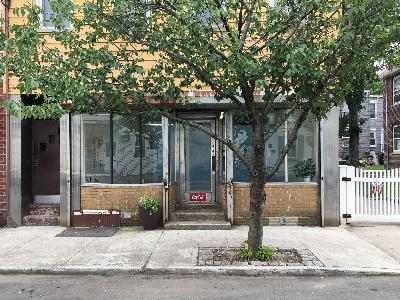
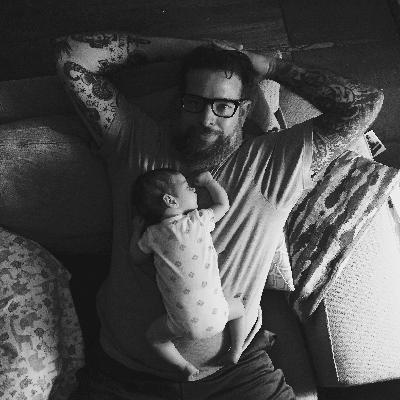




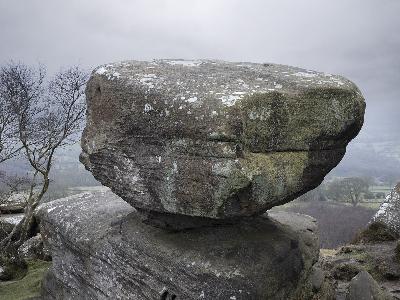
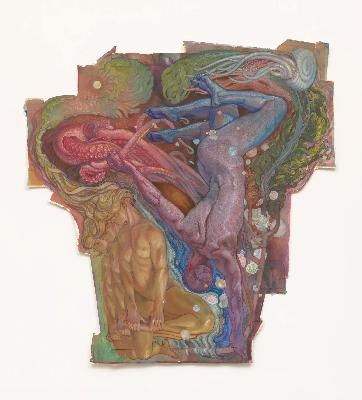
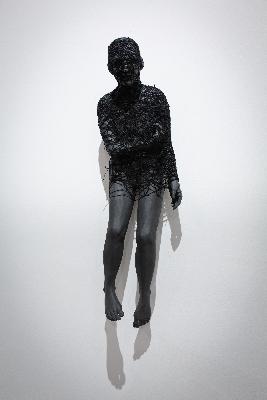
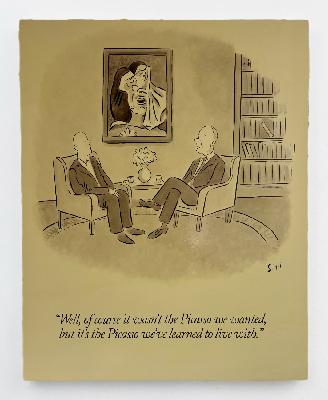
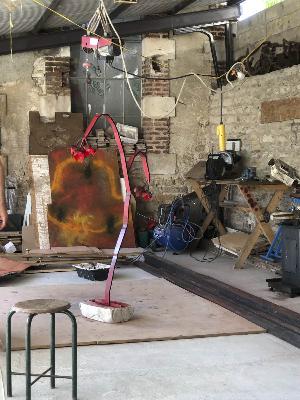
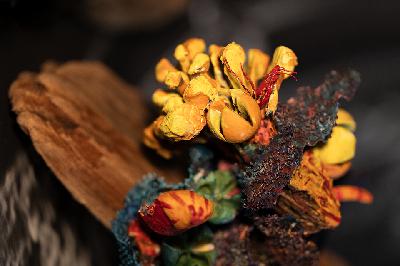
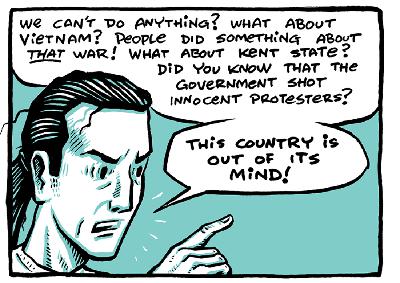
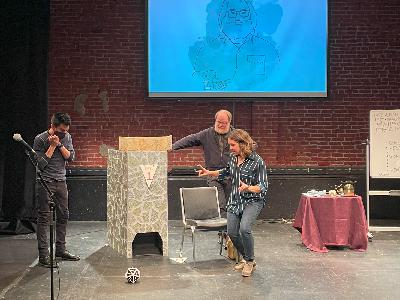
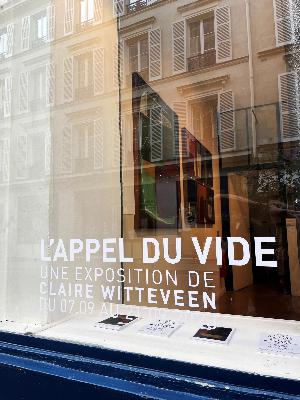
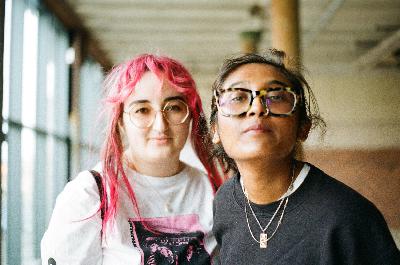
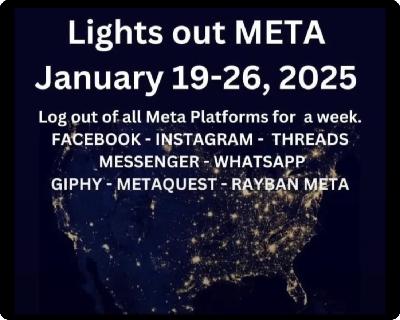
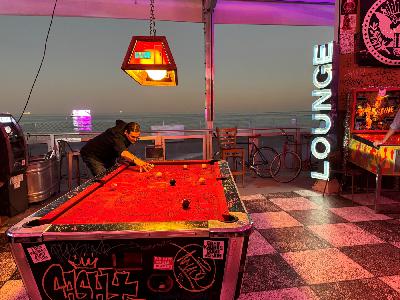
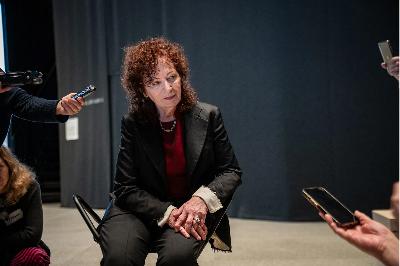
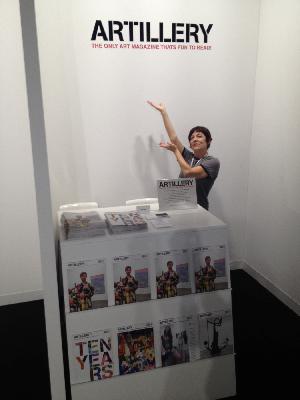



Fantastically interesting and prescient conversation about the uncomfortable and often hypocritical relationship between art, artists and its uber wealthy patrons.